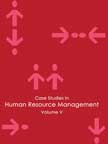Managing Cultural Change at P & G
|
|
ICMR HOME | Case Studies Collection
Case Details:
Case Code : HROB042
Case Length : 18 Pages
Period : 1990 - 2004
Pub Date : 2004
Teaching Note :Not Available
Organization : P & G Inc.
Industry : FMCG
Countries : USA
To download Managing Cultural Change at P & G case study
(Case Code: HROB042) click on the button below, and select the case from the list of available cases:

Price:
For delivery in electronic format: Rs. 500;
For delivery through courier (within India): Rs. 500 + Rs. 25 for Shipping & Handling Charges
»
Human Resource, Organization Behavior Case Studies
» HRM Short Case Studies
» View Detailed Pricing Info
» How To Order This Case
» Business Case Studies
» Area Specific Case Studies
» Industry Wise Case Studies
» Company Wise Case Studies

Please note:
This case study was compiled from published sources, and is intended to be used as a basis for class discussion. It is not intended to illustrate either effective or ineffective handling of a management situation. Nor is it a primary information source.
Chat with us

Please leave your feedback

|
|




<< Previous
"P&G's desire to change isn't a sign of weakness but one
of strength. Successful companies can't sit still. They must continually
reinvent themselves in order to stay competitive in an ever-changing
environment."1
- Mel Hughes, Financial Analyst at Stein, Roe & Farnham, a
US-based investment firm.
"P&G people and our strong culture are sustainable
competitive advantages. P&G people are bright, creative owners of their company
with a passion for winning. But, more than that, they are committed to improving
the lives of the world's consumers. They embrace a common set of values and
principles that keeps them focused on doing the right thing - on doing whatever
it takes to serve our consumers."
- www.pg.com, May 04, 2001.
Introduction
|
The US-based Procter and Gamble (P&G), one of the leading fast moving consumer
goods (FMCG) companies in the world was faced with a situation of stagnant
revenues and profitability in the mid-late 1990s (Refer Exhibit I). In order to
accelerate growth, P&G's President and CEO at the time, Durk Jager (Jager)
launched the Organization 2005 program in July 1999. Organization 2005 was a
six-year long organizational restructuring exercise, which involved a radical
revamping of P&G's organizational culture, reduction in hierarchies and
retrenchment of employees. With the implementation of the program, P&G aimed to
increase its global revenues from $38 billion in 1999 to $70 billion by 2005.
|

|
Established in 1837, P&G was globally famed for its people-centric policies
(Refer Exhibit II). It was the first company to introduce a shorter workweek
over a hundred years ago, and also had the oldest profit-sharing plan in the
US.
Each and every employee was entitled to stock options in P&G. Over the
decades, P&G had built a strong, tradition-bound and conservative corporate
culture that was resistant to change. Analysts felt that the culture had
taken deep roots in P&G and in its operations across the world. They felt
that changing this culture would be a major challenge. Jager took up the
challenge, in order to foster growth and innovation in the company.
|
|
Analysts said that though the Organization 2005 program was
well-conceived, it was not executed properly. They felt, and Jager
himself admitted, that he tried to change the culture too
drastically in a very short time.
This resulted in a rise in costs and a decline in the company's
profitability. In April 2000, P&G announced an 18% decline in its
net profit for the January-March 2000 quarter. For the first time in
eight years, P&G witnessed a decline in net profits. After a brief
stint of 17 months as CEO, Jager resigned. |
In June 2000, Alan George Lafley (Lafley) took over as the new President & CEO
of P&G. Lafley reverted back to the old culture of P&G and did not make attempts
to change it radically. With Lafley at the helm, P&G's financial performance
improved significantly (Refer Exhibit III).
The company's share price shot up by 58% to $92 by July 2003, as against a fall
of 32% in S&P's 500 stock index. However, analysts expressed doubts, whether
Lafley's leadership would sustain P&G's growth in the long term.
Managing Cultural Change at P & G
- Next Page>>
|
|










